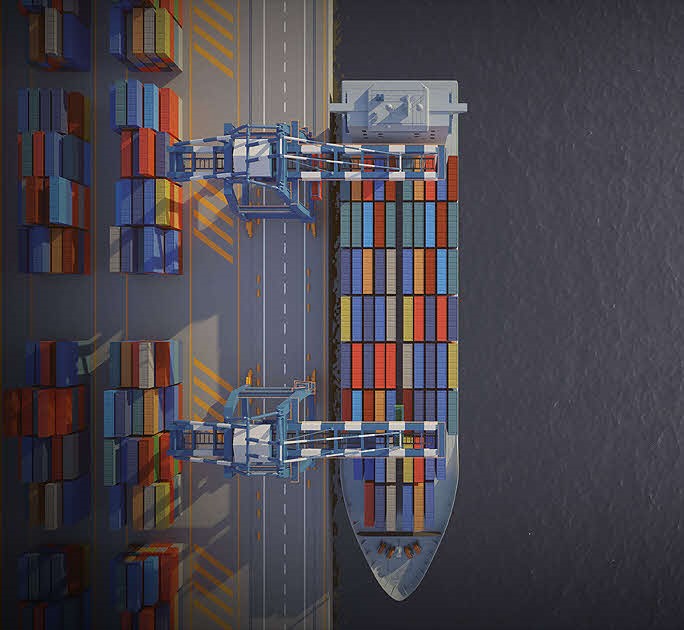Digitisation of Precision SCF Chain Finance
While governments across Asia have introduced support programmes for businesses in response to coronavirus, these will not last forever. However, while they are still in force, corporations with Asian suppliers have a window of opportunity to make their supply chains more resilient by implementing supply chain financing programmes. Sriram Muthukrishnan, Group Head of Trade Product Management at DBS, examines how this can be accomplished quickly and efficiently by taking advantage of digitisation.

The global trade finance gap and its impact on micro, small and medium-sized enterprises (MSMEs) is not a new problem: in a recent report, the Asian Development Bank estimated it at approximately US$1.5tn over recent years, with coronavirus expected to push it above US$2.5tn. The same report also sees MSMEs in developing and least-developed countries as especially vulnerable to this gap.
This intense financial pressure on MSMEs incurs significant operational risks for large corporate supply chains in the event of supplier failure or financial instability. In one 2017 example from the automotive industry, the cost to the ultimate buyer caused by the financial instability of a tier 2 supplier was estimated at €400mn. In situations where buyers have 100% transparency along their supply chains to the nth tier, these risks can be managed through measures such as dual or multi sourcing. Unfortunately, this degree of transparency is still likely to be the exception rather than the rule, with a Deloitte survey finding that 65% of chief procurement officers polled either entirely lacked or had limited visibility beyond their tier 1 suppliers1.
Temporary respite begets opportunity
At present, the risks associated with this supply chain opacity are to some extent being offset by the various government coronavirus financial support programmes, from which MSMEs are benefitting. However, this support will have to be withdrawn at some point and, when it is, the consequences may be severe for corporate supply chains. Costly disruption caused by financial difficulties or failures among invisible or unknown, yet vital, lower-tier suppliers could become far more commonplace.
There is therefore a window of opportunity to address these issues through measures such as supply chain financing that is accurately targeted towards smaller, but critical, suppliers. That obviously necessitates identifying these key suppliers and, if corporates are struggling to achieve this, who else may be able to help them. An inkling of how this might be accomplished comes from large ecommerce platforms, which have become extremely efficient in collecting, sharing and analysing data in real time – as well as the associated real-time, automated decision making.
The raw operational data to support this type of process for identifying critical suppliers crosses the books of banks every day. Unfortunately the vast majority of banks are unable or unwilling to leverage this opportunity because of their legacy technology. Furthermore, even if provided with the necessary information on key suppliers by the buyer, they typically approach any financing decisions using similar legacy credit decision making. The norm is to base financing decisions on stale financial or accounting data, which some MSMEs might struggle to provide in the required format anyway, or on the basis of invoices already accepted by a large, well-rated buyer, which for MSMEs is often too little, too late.
Those that can, do
Fortunately, there are a few exceptions to this situation. Some banks have invested heavily in technology, including artificial intelligence and machine learning, and so are equipped to analyse the payment traffic that crosses their books in real time in order to identify the linkages in supplier networks. The value-add achieved by this process is considerable, but is further enhanced if the bank also has a large or rapidly growing MSME franchise, as this will radically increase the number of supplier connections it can infer and map.
This process has the further advantage that the analytics can also be used to assess the quality or “stickiness” of supplier relationships and potentially also supplier performance and risk. This can then be used to support faster and more accurate decision making for both pre and post-shipment finance.
In some cases this analysis may be able to provide a near-complete supplier map. However, even where this is not possible, close collaboration with the anchor corporate buyer may enable hidden connections to be made to get closer to the complete picture. Technologically this has become easier to achieve through the wider adoption of blockchain technology and APIs among both corporates and (certain) banks.
In some cases, this API connectivity has already been used to go a step further and deliver a complete end-to-end solution. One recent example leverages blockchain and transaction analytics to provide supplier mapping, together with financing throughout multiple supplier tiers across the supply chain of a major Chinese logistics corporation on the Rong-E Lian platform2. The flexibility and performance of solutions such as this ultimately open the door to the deployment of instant bespoke multi-tier pre and post-shipment financing solutions for large corporate supply chains across Asia, as well as globally.
Appetite and network
Nevertheless, the practical value of such a capability ultimately depends upon two further critical criteria if targeted and accelerated supply chain financing is to be achieved: credit appetite and network. Some major banks in the trade space have started to ration their liquidity tightly and have also started selling down assets in size. As such, even if they had the necessary technology to power the solution outlined, they lack the credit appetite to deliver on it. By contrast, some large regional banks in Asia are actively growing their balance sheets and have ample capacity to support very large supply chain programmes with commensurate credit requirements. In some cases, this capacity and appetite may match or even exceed that normally associated with the largest global banks.
One of the major effects of coronavirus on trade is the way in which it has prompted large multinationals to increase the geographical diversification of their supply chains in Asia, particularly in terms of reducing over-reliance on a single location (usually China). China has stated its ambitions to move up the value chain and transition from being the world’s manufacturing hub to becoming an innovation and demand-driven economy. Multinationals now have to take into consideration the relative merits of near-shoring and onshoring – driven by logistics as well as geopolitical considerations. This is particularly evident in the case of US multinationals: Kearney’s China Diversification Index shows China’s share of US imports from low-cost countries fell from 67% in 2013 to 56% by Q4 2019 (latterly accelerated by the US/China trade war)3.
Conclusion: opportunity during adversity
Eventually governments will have to start rolling back the financial support programmes they have provided. In the meantime, there is an opportunity for corporates operating across Asia to improve both the transparency and resilience of their supply chains. Those that do and ensure that the right financing is reaching the right suppliers (possibly critical suppliers that they previously did not even know existed) are far less likely to suffer business disruption when government support is eventually withdrawn. Given the right partner bank – armed with the appropriate technology, credit appetite and network – this is a practical and achievable competitive edge.
This article was first published by Global Trade Finance in January 2021.
The information herein is published by DBS Bank Ltd. (“DBS Bank”) and is for information only.
The information is not directed to, or intended for distribution to or use by, any person or entity who is a citizen or resident of or located in any locality, state, country or other jurisdiction where such distribution, publication, availability or use would be contrary to law or regulation
DBS Bank Ltd. All rights reserved. All services are subject to applicable laws and regulations and service terms. Not all products and services are available in all geographic areas. Eligibility for particular products and services is subject to final determination by DBS Bank Ltd and/or its affiliates/subsidiaries.
3https://www.kearney.com/operations-performance-transformation/us-reshoring-index/full-report



